Safety tips for using and | repairing heaters
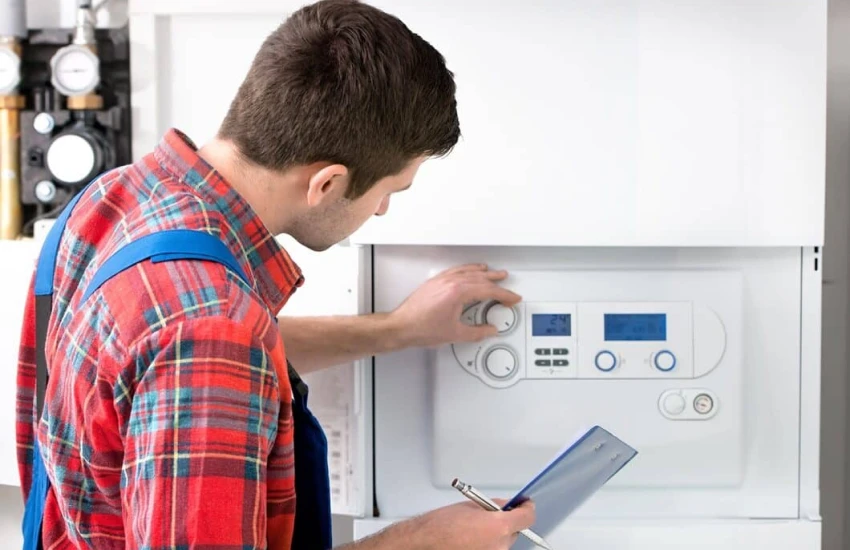
This comprehensive safety guide provides essential information for homeowners about heater operation and maintenance. From basic safety protocols to emergency procedures, learn how to keep your home and family safe while using and maintaining your heating system. Understand crucial warning signs, maintenance requirements, and when to seek professional help.
Safety tips for using and repairing heaters.
Home heating systems provide the warmth and comfort we rely on during cold weather, but they can also present serious safety risks if not properly maintained and operated. From fire hazards to carbon monoxide concerns, understanding proper heater safety isn’t just about comfort – it’s about protecting lives. Whether you’re performing routine maintenance or addressing repair issues, following proper safety protocols is absolutely crucial.
Every year, heating equipment is involved in thousands of home fires and carbon monoxide incidents. Many of these accidents could have been prevented with proper safety measures and maintenance. This comprehensive guide will walk you through essential safety practices for both operating and repairing your heating system, helping you maintain a safe and comfortable home environment while avoiding potential hazards.
Your fridge is a kitchen superstar as it keeps all your food fresh and drinks cold.
But does the fridge feel warm when you open it?
Is there water all over the floor?
Fridge issues are the worst!
Understanding Your Heating System
Before diving into specific safety measures, it’s important to understand your heating system’s basic components and operation. Different types of heating systems – whether gas, electric, or oil-based – have their own unique safety considerations. Knowing what type of system you have and how it works is the foundation of safe operation and maintenance.
Most home heating systems include:
- Heat generation unit (furnace or heat pump)
- Distribution system (ductwork or pipes)
- Control systems (thermostat and safety controls)
- Ventilation components
Essential Operating Safety Guidelines
Safe operation of your heating system starts with basic preventive measures. Establishing good safety habits can prevent many common heating-related accidents and emergencies. Always ensure proper ventilation, keep flammable materials away from heating equipment, and maintain clear space around your heating unit.
Your heating area should be free of stored items, especially anything flammable. Even materials that seem harmless can become hazardous when too close to heat sources. Regular visual inspections of your heating equipment and surrounding area should become a routine habit.
Carbon Monoxide Safety
Carbon monoxide poses a silent but deadly risk in homes with fuel-burning heating systems. This odorless, colorless gas can reach dangerous levels without any obvious signs. Proper ventilation and functioning carbon monoxide detectors are your first line of defense against this hazard.
Critical safety measures include:
- Installing CO detectors on every floor
- Annual professional inspection of fuel-burning systems
- Maintaining proper ventilation
- Knowing the symptoms of CO poisoning
Too Much Ice Buildup
While some frost is normal, excessive ice buildup points to warm, humid air entering due to a faulty door seal. Check the seal for any cracks or gaps and replace it to prevent moist air from infiltrating.
Fire Prevention Measures
Fire safety requires constant vigilance when operating heating equipment. Regular maintenance, proper clearance around heating units, and working smoke detectors are essential components of fire prevention. Never disable or bypass safety controls, no matter how temporary the situation might seem.
Safe Maintenance Practices
Regular maintenance is crucial for safe heater operation, but it must be performed correctly. Before attempting any maintenance:
- Turn off all power sources
- Allow the system to cool completely
- Ensure proper lighting and ventilation
- Have appropriate tools ready
- Keep safety equipment nearby
Professional vs. DIY Repairs
While some maintenance tasks are suitable for homeowners, many repairs require professional expertise. Understanding the difference can prevent dangerous situations and costly mistakes. Never attempt repairs that involve gas lines, electrical systems, or major mechanical components unless you have proper training and certification.
Emergency Procedures
Knowing how to respond to heating emergencies can prevent disasters. Every household member should know basic emergency procedures, including how to shut off the system, recognize danger signs, and when to evacuate. Keep emergency contact numbers readily available, including your utility companies and heating service providers.
Seasonal Safety Considerations
Different seasons bring different safety challenges for heating systems. Fall preparation, winter operation, and spring shutdown each require specific safety measures. Creating a seasonal maintenance checklist helps ensure no crucial safety steps are overlooked.
Children and Pet Safety
Special consideration must be given to protecting children and pets around heating equipment. Establish clear rules about safe distances from heating units and teach children about potential dangers. Use appropriate barriers or guards when necessary to prevent accidental contact with hot surfaces.
Electrical Safety
Electrical safety is crucial whether you have an electric heating system or simply electrical components in your heating equipment. Never use damaged power cords, and ensure all electrical connections are properly grounded. Water and electrical components should never mix – be especially cautious in basements or humid areas.
Gas System Safety
For homes with gas heating systems, understanding gas safety is essential. Know how to recognize the smell of gas and what to do if you detect it. Never attempt to locate gas leaks yourself – this is strictly a job for professionals.
Safety Equipment
Every home should have basic safety equipment related to heating system operation. This includes:
- Smoke detectors
- Carbon monoxide detectors
- Fire extinguisher
- Basic tools for emergency shut-off
Documentation and Records
Maintain detailed records of all maintenance, repairs, and safety inspections. Keep manufacturer manuals and safety guidelines easily accessible. Document any unusual occurrences or problems with your heating system – this information can be valuable for technicians and may help identify developing safety issues.
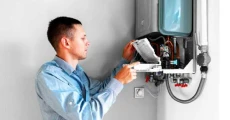
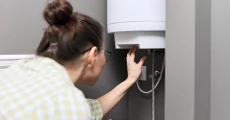
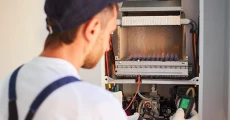
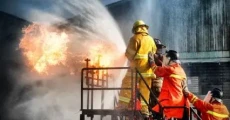
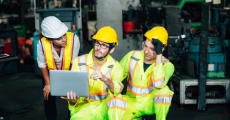
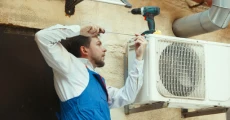
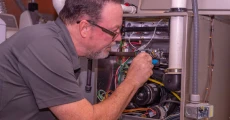
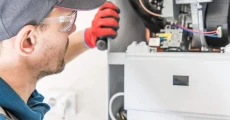
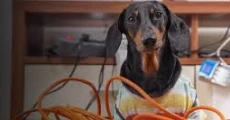
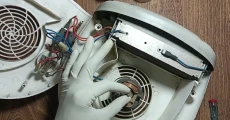
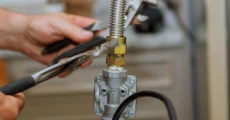
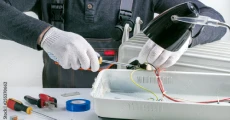
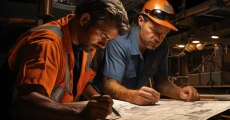
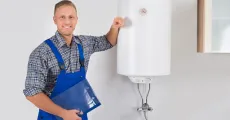
Takeaway
Safety should always be the top priority when operating and maintaining your heating system. While some maintenance tasks can be handled by homeowners, never hesitate to call a professional when in doubt.
At CLT Appliance Repair, we prioritize your safety above all else. Our certified technicians are trained to handle all types of heating system maintenance and heating repair in charlotte nc with the highest safety standards.
Don’t risk your family’s safety with DIY repairs when professional help is just a phone call away.
FAQs
Annual professional inspections are essential, ideally before the heating season begins.
Evacuate immediately, don’t touch electrical switches, and call your gas company from outside the building.
It’s not recommended. If you must use one, ensure it has tip-over protection and keep it away from flammable materials.
Test monthly using the test button and replace batteries twice yearly. Replace the entire unit according to manufacturer guidelines.
Maintain at least three feet of clearance around all heating equipment.
Don't let a malfunctioning Heater disrupt your daily life. Contact CLT Appliance Repair today at 704-606-9043 to schedule your Heater repair service.
We'll have your Heater back to optimal performance in no time!
Dryer Repair Charlotte NC | Washing Machine Repair Charlotte NC | Refrigerator Repair Charlotte NC | Microwave Oven Repair Charlotte NC | Freezer Repair Charlotte NC | Dryer Vent Cleaning Charlotte NC | Dishwasher Repair Charlotte NC | Cooktop Repair Charlotte NC | Stove Repair Charlotte NC | Charlotte Ice Maker Repair | Garbage Disposal Repair Charlotte NC | Plumbing Repair Charlotte NC | Water Heater Repair Charlotte NC
Admiral Appliance Repair | Amana Appliance Repair | Bosch Appliance Repair | Electrolux Appliance Repair | Frigidaire Appliance Repair | General Electric Appliance Repair | Haier Appliance Repair | Hotpoint Appliance Repair | Jenn-Air Appliance Repair | Kenmore Appliance Repair | KitchenAid Appliance Repair | LG Appliance Repair | Magic Chef Appliance Repair | Maytag Appliance Repair | Roper Appliance Repair | Samsung Appliance Repair | Speed Queen Appliance Repair | Whirlpool Appliance Repair | Dacor Appliance Repair | Viking Appliance Repair | Thermador Appliance Repair | Sub-Zero Appliance Repair | Wolf Appliance Repair | Monogram Appliance Repair | Bertazonni Appliance Repair | BlueStar Appliance Repair | Thor Appliance Repair | Miele Appliance Repair | Cafe Appliance Repair | GE Appliance Repair
Freezer Repair Indian Land SC | Freezer Repair Indian Trail NC | Freezer Repair Pineville NC | Freezer Repair Rock Hill SC | Freezer Repair Belmont NC | Freezer Repair Matthews NC | Freezer Repair Lancaster SC | Freezer Repair Cornelius NC | Freezer Repair Fort Mill SC | Freezer Repair Concord NC | Freezer Repair Denver NC | Freezer Repair Monroe NC | Freezer Repair Mooresville NC | Freezer Repair Harrisburg NC | Freezer Repair Lake Wylie SC | Freezer Repair Huntersville NC | Freezer Repair Kannapolis NC | Freezer Repair Mint Hill NC | Freezer Repair Waxhaw NC | Freezer Repair Troutman NC | Freezer Repair Davidson NC | Freezer Repair Gastonia NC | Freezer Repair Charlotte NC

